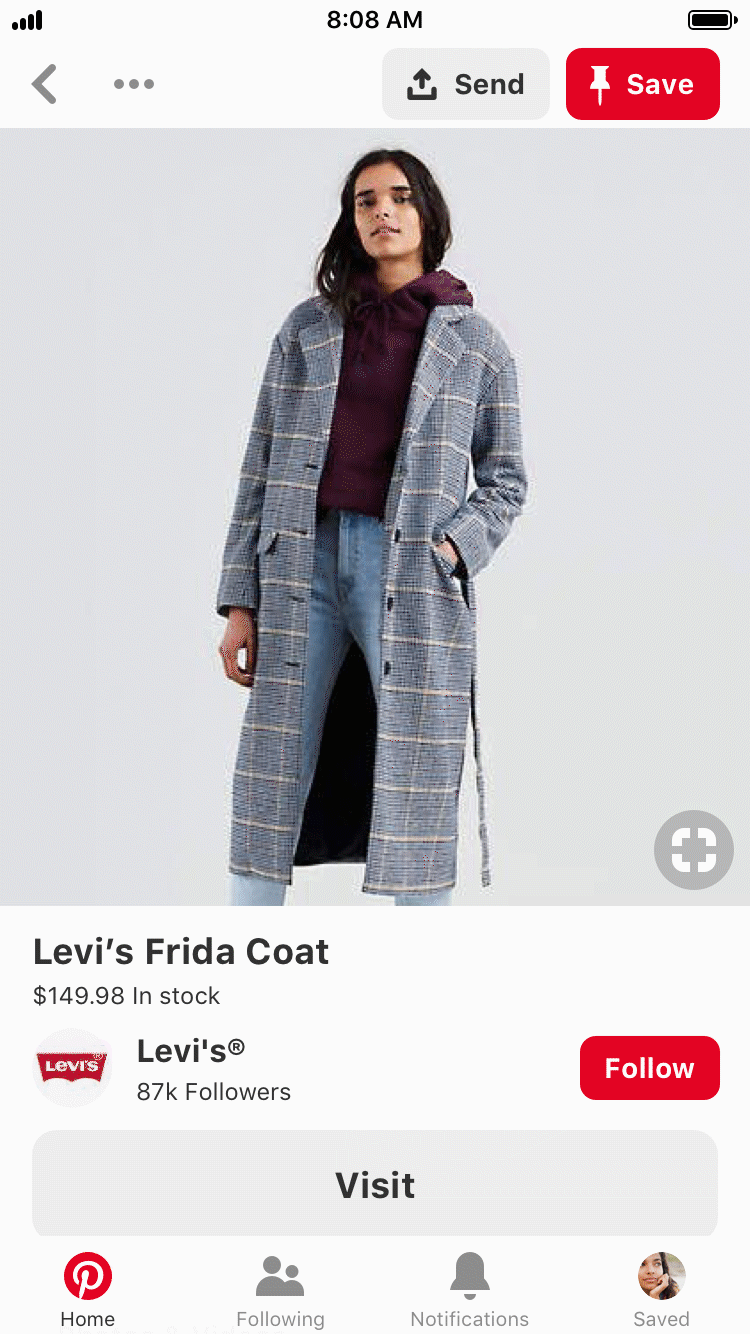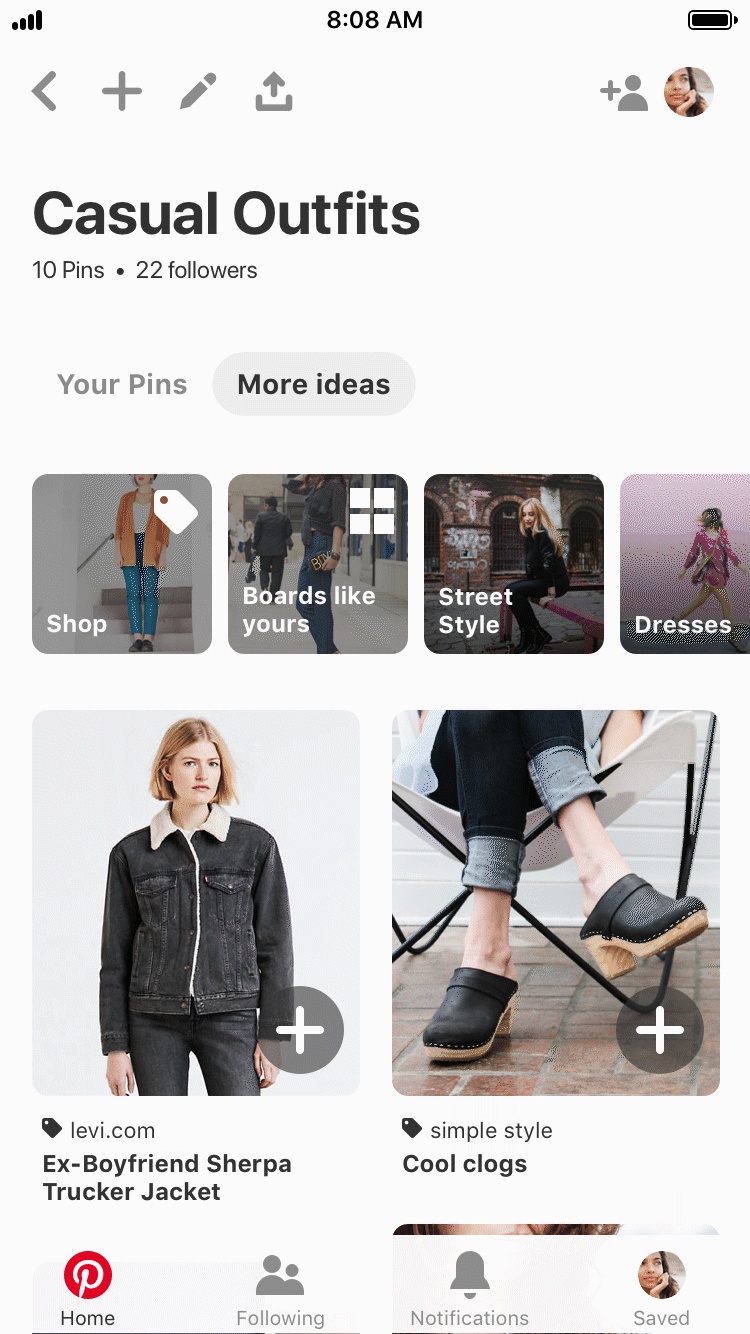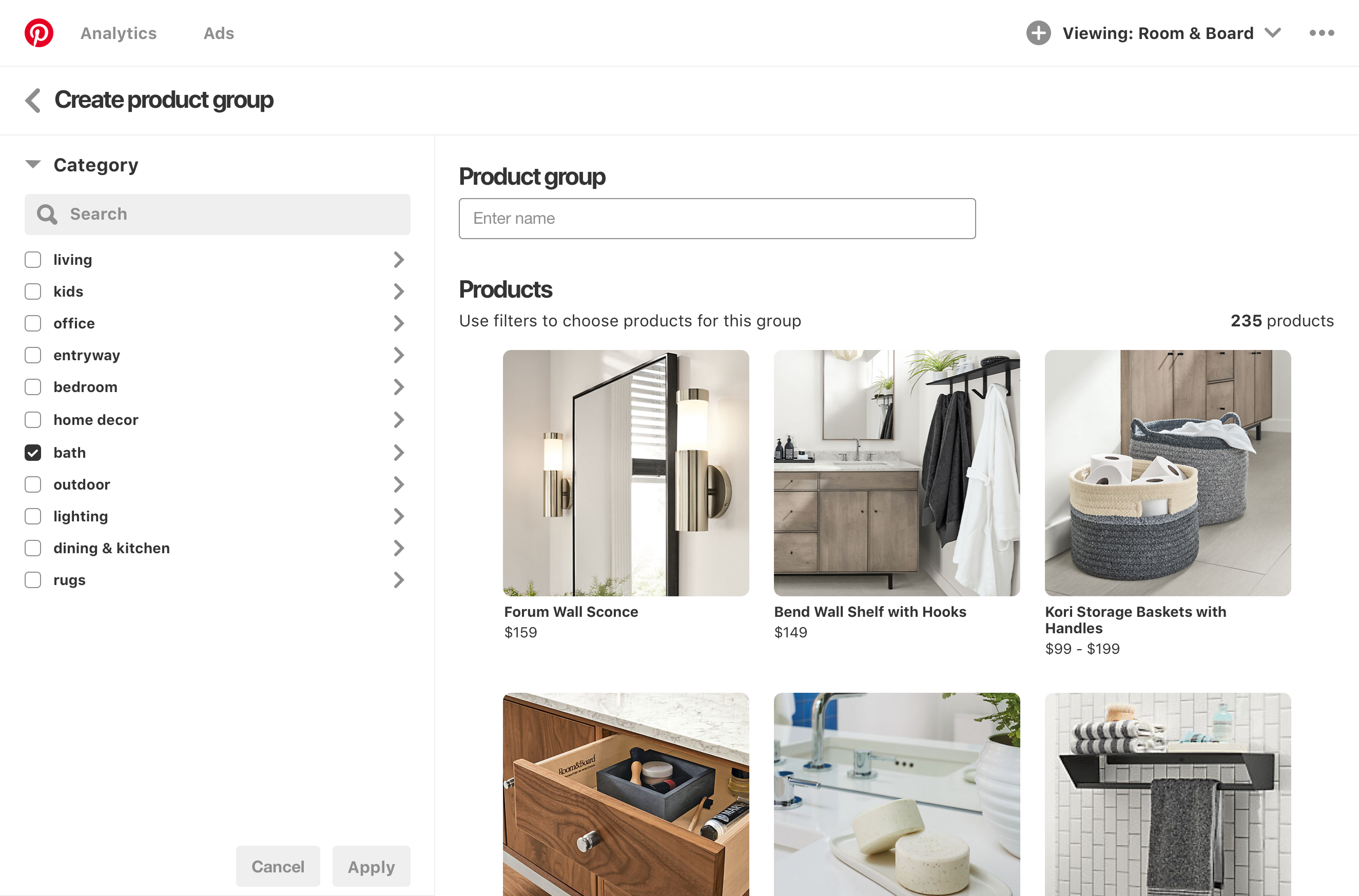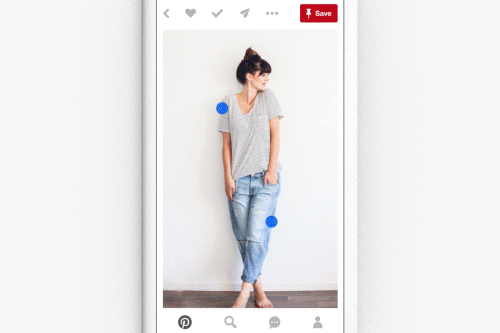Subscribe now and get the latest podcast releases delivered straight to your inbox.
When looking for inspiration for your wardrobe, home, or your next DIY project, many turn to Pinterest to see what’s trending.
I’m one of these people myself - and if you are too, you know how frustrating it is to see the perfect product -- but have no idea how to buy it.
Clearly, this isn’t uncommon, as Pinterest announced they’re making updates to their platform that will make it easier than ever to connect brands with interested buyers.
On their company blog, the team agreed that the nature of the platform leads users to come to Pinterest with a shopping mindset, presenting a great opportunity for brands to connect with ready and willing buyers.
This week, they rolled out several features that allow users and brands to connect in a mutually beneficial way.
Pinterest’s Latest Shopping Features
Pinterest rolled out five new features that will help drive more sales for brands, while also improving the user experience for its users.
1. Shop By Brand

Pinterest has created a new section dedicated to specific brands that appear beneath branded Product Pins.
This will allow the user to view more related products your brand offers, and they can even view your entire catalog by clicking “More from [brand].”
Having this feature available will make it easier for brands to better engage Pinterest users with their entire line, and keeps the conversation going after just pinning one item.
2. Personalized Shopping Recommendations

I don’t know why, but when an algorithm picks something just for me, I tend to like it more. (Guess that means its working.)
And I’m not alone in this.
Recent research has shown that more consumers want personalized service than ever before.
To cater to that need, Pinterest is now adding personalized, “in-stock” shopping recommendations alongside any style, home, beauty, or DIY boards.
The products that appear are based on what the user has previously pinned to ensure it matches their interests and preferences and they also have the option to pin these recommendations to their board for later or click to go to the checkout page on the retailer’s website immediately.
It’s currently unclear if this will just be made up of ads or if it will be filtering content shared on the platform, but I wouldn’t be surprised if it was used for advertising in the near future.
3. Catalogs

Brands can now also upload their entire product catalog to the platform with ease.
Once your catalog is created, dynamic Product Pins, which include information that makes it easier for users to shop your pin, are automatically created from each item in your import. This helps draw attention to related products that people may not necessarily know or search about, but would determine they need if shown them.
With this feature comes a new dashboard for businesses to organize their catalog and keep it consistently updated.
Anyone with a Pinterest Business account can take advantage of this.
4. Shopping Ads
Pinterest is also making their shopping ads available to all advertisers through their Ads Manager.
Shopping Ads, pictured below, include clickable dots over specific products in a photo, allowing users to “Shop the Look” so users can purchase related items. This is similar to shoppable posts on Instagram.

Previously, these ads were only available to a limited number of big brands. Now, all brands will have access to them.
Additionally, they’ve made it easier for brands to create them. Once your product is uploaded to Pinterest, advertisers can promote existing Pins by “boosting” them and running as Shopping Ads.
5. Shopping Search
Last, but not least, no, when you search an item on Pinterest, in-stock Product Pins will appear at the top of the search bar.
This helps brands gain exposure with audiences looking for a product they sell, but may not necessarily know they offer it.
It also helps the user by providing them options based on their intent.
If they’re just looking for inspiration, they can continue on with regular, non-branded results. If they’re looking to buy, they can simply click “See More” and see more in-stock products.
Prioritize Pain Points
For eCommerce marketers with an audience base on Pinterest, this clearly presents a great opportunity to spread awareness about your product and have another link out there to be found.
However, whether you’re a marketer for Levi’s or you’re a B2B SaaS company, this is still a good reminder to prioritize solving for the customer's pain points.
Pinterest’s addition of these features are a great example of a solution-based approach; recognizing & solving a key problem for the user (not being able to find where to purchase products), while also including way brands to gain exposure on Pinterest.
When you get into your customers' mindset, it becomes easier to develop a strategy in a way that resonates with them.
It seems obvious, but in a world where brands are fighting for customer attention, that simple step is overlooked too often.
If we focus on solving for our customers instead of just getting in front of them, the results will logically follow.
So, in every strategy you create, whether it be content, website, or PPC - make sure you’re looking at it from the lens of your persona pain points, mindset, and goals.


Order Your Copy of Marcus Sheridan's New Book — Endless Customers!

